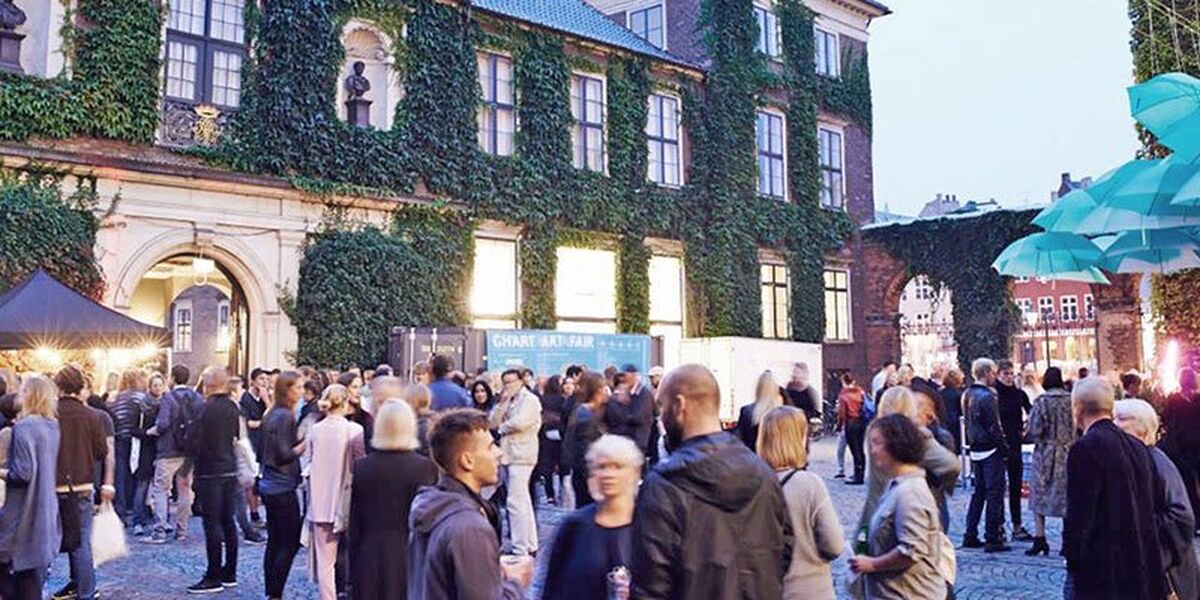Ladies and Gentlemen, gallerists, kurators, art dealers, collectors, museumdirectors and art bureaucrats of all kinds
I have been asked, with short notice, to speak for the artists, or rather for the Art, which today not necessarily is the same, if it ever was.
This building where we are standing in this moment, was opened in 1883 and in half a century after that, here was the great Salons where it was stated who was who, and who had which possession in Danish art life. As today it caused, opposition, fights and critic from the very beginning, and after the 1. World war it was rapidly declining, and this building lost it’s position in Art. In 1969 when this house was in many ways a ruin, Troels Andersen took the initiative to Festival 200 in Charlottenborg. Here was a public bath upon the library of the academy, there was an open free printing office there was a cinema where everybody could show there films and work workshops and concerts and students of Beuys class in Düsseldorf, where more later became very famous, there was actions, Fluxus and installations.
And I remember this balcony over the main entrance, that today is dangerous to step out on, already then was dangerous to step out on, so of course to artists from Düsseldorf settle down out on this Balcony. And artists still does, to be an artist is to live on a dangerous Balcony. Within 3 years came a festival for all alternative movements in Copenhagen and surrounding countries, also the Exhibition for female artists from many countries, actually one of the big manifestations , that women was raising also in the art world, many is today our most outstanding artist. And after that the established art groups had enough and the first of two modernisation of the building took place. For 3 decades the independent art associations or groups took over, but after the 2. modernization around 2008 is collapsed. Today the exhibition hall is back with the Academy, the State wants an international art hall, but doesn’t want to pay the price.
The Academy in the Palace Charlottenborg was founded in 1754 by Frederik the 5., the first director was J.J. Saly called in from France. Since Michelangelo argued with the Pope about this Christ figure on the his Doomsday wall in the Vatican and the Pope in the end said, then go and do as you like, it has been settled that the artists has the freedom or even the duty to question all values in society, turn them upside down to create new images. The teaching in the Academies in the 1700 century was drawing after plaster castings of antic and ancient Kings, Dukes, Gods, Heroes. They discussed the figure as pure form, it didn’t matter which King or God it was. An independent and autonomic language and method was developed, as Winchelmann stated: Art is a certain way to experience the World through our senses and express it in a physical form, sculpture, painting, architecture. This was the beginning the plaster liberated the art.
When Beuys declared his social sculpture or better the social plastic, he referred to W. Lehmbruck , he committed suicide 1919 after first world war, Lehmbruck said “ that the artistic form form appears when society make a pressure on art,” Beuys said he was thinking about that statement, and then he got the idea , that if the society can make pressure on art, the artist could reverse the pressure, so it was the art that make pressure on society, the social plastik idea was on. Together with minimalism and conceptualism it was stated that the artwork as psychical object was no longer relevant. That in form, surface, line and colour, no more formalistic experience was possible, the artwork was one more time declared dead.
But as we also can se in this Art Fair Chart, since then, there has never in history been produced so many artworks, sometimes dead can be a liberation. The first time modern art was declared dead, was at the 1. World war which actually was the dead of European civilisation, and the most famous icon for that, is the ready made by Duchamps, and even I agree with Beuys when he state ” Das schweigen Duchamps ist überwertet ” I would like sometimes that art scientists could be more silence about Duchamps, remembering Wittgenstein, ” that about which one cannot speak, one should be silent.” When the great Salons still was ruling artlife, and the believe in the future was not dissolved by 1. World war, and the western civilization and values was on the top of the world, this was the place to have success.
Now we live in the global extremely greedy new liberal financial times, where our technologies have blown our minds in the digital mists and the cynical fatalism is on easy way. Whether this chaos must evolve to Armageddon or new productive opportunities, is solely up to every single individual. We will make art no matter the condition we have, even in the concentration camps they created art of bread, sot and blood. We are not there yet, and I believe that art can change the mind of an individual person, I believe that the mind of every single individual can change the world, in that sense I still believe that art can change the world. We must see about Chart will decline as the old Salon or Charts art and artist will show us images that can change our minds and keep art alive, as a vital power in our culture.
Chart has high ambition about your artistic quality, but remember Paik; ”When I use the word quality, I don’t mean value but character”. I think Chart has shown splendid character.


